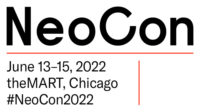CLEMSON, SC -- International Product Assurance (IPA) Laboratories (formerly the Tile Council of North America (TCNA) Product Performance Testing Laboratory) announces solar reflectance and light reflectance testing options important for determining LEED Building Credit compliance.
“We’ve seen a dramatic rise in our customers’ needs to test their building products for sustainable characteristics,” said Katelyn Simpson, director of laboratory services at IPA Laboratories. “We’ve updated the lab with the latest state-of-the-art equipment for determining solar reflectance index (SRI) and light reflectance value (LRV).”
SRI is a value based on solar reflectance (a measure of solar energy reflected by a surface) and thermal emittance (a measure of a material’s ability to radiate heat). Results can be used to obtain LEED sustainable sites (SS) credits for heat island reduction when roofing materials have a minimum SRI of 82 for low-sloped roofs and 39 for steep-sloped roofs, or when paving materials have a minimum SRI of 33.
LRV is a measure of how much light a material can reflect. LEED indoor environmental quality (IEQ) credits for interior lighting are available when interior finishes with a surface reflectance greater or equal to 80% for ceilings and 55% for walls are used. Credits are also available for furniture finishes with a surface reflectance greater or equal to 45% for work surfaces and 50% for movable partitions.
Credits toward conformance with ANSI A138.1 and Green Squared® certification are also available with SRI and LRV results. IPA Laboratories offers testing for any product seeking these or other LEED credits. “These testing results are critical for manufacturers to understand, and for specifiers and designers to utilize, when aiming to satisfy the marketplace and regulatory demand for sustainable building,” said Bill Griese, TCNA deputy executive director.






